
No Compromises!
The isn't-stylish-and-doesn't-protect-you bike helmet?
A bit of safety is not enough—rather trust the experts.
Functional Safety for Factory Automation Applications

Wide Sensor Portfolio
Design of Individual Solutions
Transferring Knowledge
With the publication of Regulation (EU) 2023/1230 of the European Parliament and of the Council on machinery, the previously applicable European Machinery Directive 2006/42/EC has recently been replaced. Since the EU Machinery Regulation came into force, Pepperl+Fuchs has received an increasing number of inquiries regarding the conformity of safety-related components in our portfolio with the changed requirements of this regulation.
The relevant standards experts and product managers at Pepperl+Fuchs have examined and evaluated this issue from various perspectives: As things stand today, we assume that Pepperl+Fuchs products that fall within the scope of the EU Machinery Regulation will also comply with it. Please use the following link to read the full statement.
Conformity of Pepperl+Fuchs Products to the EU Machinery Regulation
Official Statement on the Current Situation

Safety Products
NEW! Radar Sensors and Ultrasonic Sensors with CANopen Interface for Safety Applications

Two strong function principles for safe applications under harsh ambient conditions: Pepperl+Fuchs offers both radar and ultrasonic sensors that are diagnostics-capable thanks to their integrated CANopen interface. In combination with a fail-safe controller, these sensors can therefore be used in safety applications up to PL c/SIL 1 or, with a redundant design in a two-channel architecture, up to PL d/SIL 2.
Both sensor types impress with their low-interference function principles, highly reliable CAN communication, EMC resistance and a particularly robust design in accordance with IP68 or IP68/69 degree of protection. This makes them ideal for collision avoidance and environmental monitoring of vehicles in outdoor areas (e.g. mobile machines, heavy duty AGVs, forklifts). In addition to M12 connections or fixed cables with open cable ends, vehicle-specific connectors such as DEUTSCH or AMP Superseal are also available, making integration into existing vehicle electrical systems quick and easy. The familiar VariKont L2 design with a rotatable and swiveling sensor head allows the sensors to be precisely aligned in various installation situations.
Learn more here:
More Industry-Moving Innovations
Driverless and Safe Through the Logistics Center with Ultrasonics

AGVs should be reliably protected against collisions with people and objects in the lane when in automatic reverse travel, even if the vehicle is loaded. The blind spot in front of the fork arms must be secured in the phase instantly before lowering into the pallet. Approval according to ISO 13849-1 category 3 PL d is required for these application requirements. It should be possible to use these devices in confined spaces and they must be resistant to environmental influences such as dust, dirt, and humidity.
The USi®-safety is the only safe ultrasonic sensor system according to EN ISO 13849 category 3 PL d. It enables reliable monitoring of three-dimensional spaces, making it ideal for use on materials handling equipment.
Application Examples
Vehicle Protection at Transfer and Bottleneck Points

When operating automated vehicles, it must be ensured at all times that neither persons nor machines are harmed. In order to guarantee this in these circumstances, safe positioning of the AGV must be detected in accordance with PL d, while complying with standardized requirements such as documentation, calculation, etc. In addition to the highest precision and robustness of the sensor technology used, knowledge of the standards and guidelines, the development of a complete safety concept as well as calculation and validation are essential.
In this specific case, Pepperl+Fuchs provided the customer with an individual solution, encompassing every aspect from concept development to implementation.
Safe Refueling of Hydrogen-Powered Vehicles

Within a fleet of AGVs, different vehicles are often in use, so that different scenarios arise for them, e.g. when changing batteries or refueling, and the vehicles must be uniquely identified. In the case of hydrogen-powered vehicles, different tanks may be installed, each of which may only be refueled with a certain pressure. Since an error can cause great damage to people and machines, reliable identification is required.
Pepperl+Fuchs developed a customized complete solution for this, consisting of a safety concept and components. Two RFID transponders are attached to the vehicles for this purpose, which are suitable for use in harsh industrial environments—the required SIL level is ensured by redundancy and an evaluation of the transponder information in the safe control system.
Safe Residual Stack Monitoring on Packaging Machines

With increased automation in industrial plants, the requirements for machine safety are rising, which also affects the packaging industry. For example, due to a change in the standard (EN 1010-1:2004 changed to EN ISO 12643-4), operator intervention in potentially hazardous areas of packaging machines must be prevented in the future with PL d instead of PL b in order to ensure the greatest possible personnel protection.
Pepperl+Fuchs offers an ideal solution that is not only cost-efficient, but also easy to integrate. The safety concept is based on two photoelectric sensors of the R100 series which guarantee the required safety level through their redundant design.
Benefit from Our Know-How
Free Download!

Whenever a machine is to be offered on the market in the European Union, the Machinery Directive 2006/42/EC applies. A large number of standards to be observed here place further requirements on the machine and the overall process.
But which standard is relevant for your application and what must be observed in detail? How do you achieve the required Safety Integrity Level (SIL) or Performance Level (PL)?
Our white paper offers you practical assistance with such questions: Get an overview of the current legal and standard situation and find out, based on an example, which steps have to be taken on the way to a safe machine.
Get your free PDF now and learn more about terms like:
- Risk Assessment
- Performance Level
- Category
- Diagnostic Coverage
- MTTFd
- and much more

Events and Trainings
Pepperl+Fuchs offers a wide range of training programs for automation professionals. These programs are geared toward management, engineering, production, and safety personnel involved in equipment design.
References and Insights
From successfully realized safety solutions to backgrounds and insights on our product developments and the people behind it—learn more about our functional safety competence in this section.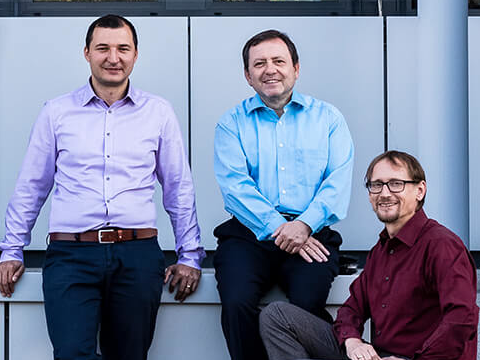
On a Mission to Ensure Safety
Extensive in-house expertise has been vital to Pepperl+Fuchs' success in the field of functional safety. In this interview, some of our experts discuss their day-to-day work, the current standards with which their products must comply, and methods for transferring knowledge.
Learn More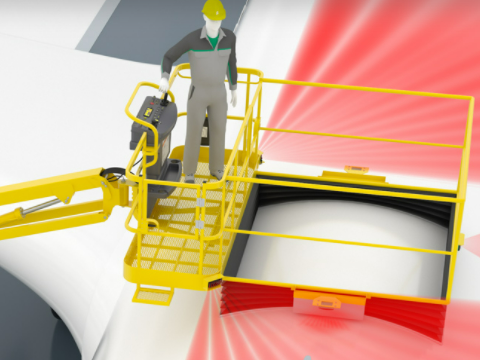
Aircraft Collision Safely Ruled Out
HUBTEX Maschinenbau GmbH & Co. KG has developed an innovative, multidirectional working platform for assembly tasks in aircraft construction. They placed their trust in the Pepperl+Fuchs experts to provide the necessary safety-compliant sensor solution. To prevent collisions in three dimensions, the lifting platform was equipped with R2100 2-D LiDAR sensors.
Learn More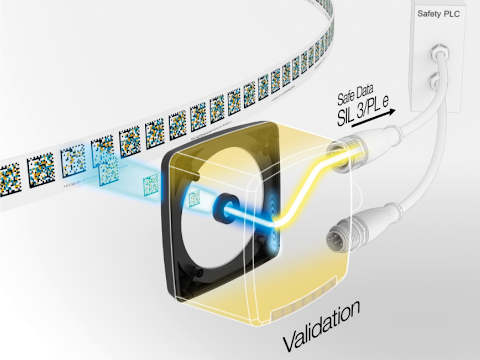
Safety Revolutionized
Pepperl+Fuchs was the first manufacturer to successfully enable SIL 3/PL e-compliant safe absolute positioning with a single sensor. In this story, learn more about this unique development and the challenges our team faced.
Learn More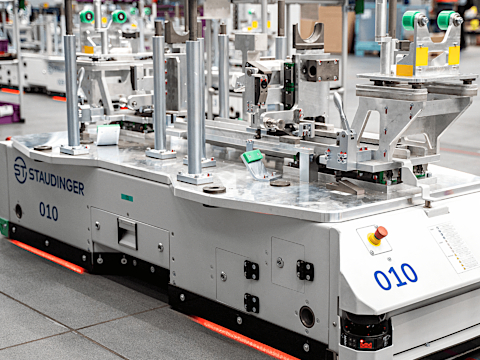
Absolute Safety in Track Guidance of AGVs
The automation specialists Staudinger use SIL 3/PL e suited camera systems from Pepperl+Fuchs to keep their state-of-the-art automated guided vehicles safely on track. This allows the company to supply customers with a complete solution comprising the control and drive technology plus the vehicle itself from a single source.
Learn More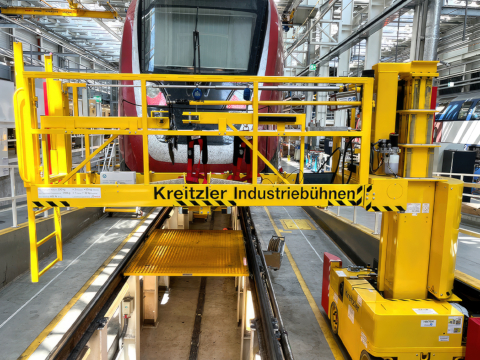
Safety at the Highest Level
A train can travel hundreds of thousands of kilometers before its wheels need to be replaced due to wear. Regular maintenance is the only way to cover such a distance without any faults. To protect personnel from accidents when performing maintenance work on lifting platforms, Kreitzler Industriebühnen GmbH relies on a safety positioning system from Pepperl+Fuchs.
Learn MoreOn the Safe Side
Learn more about the eventful history of functional safety in this entertaining interview with two of our industry experts: Where are the origins? What milestones changed this discipline? Where do the industry and Pepperl+Fuchs stand today? Answers to these questions await you in the detailed interview.
Deep Dive

联系我们
 Downloads
Downloads
- SISTEMA Libraries (SLB and VDMA 66413 formats available)
 More Information
More Information
- Safety Product Selector
- Functional Safety for Process Automation Learn more about our products and solutions for functional safety in process automation environments.










 +886 2 27227708
+886 2 27227708